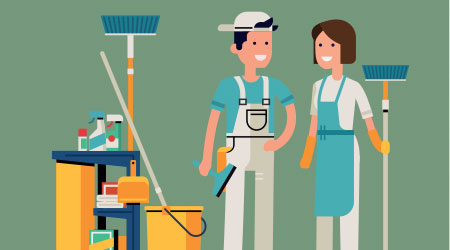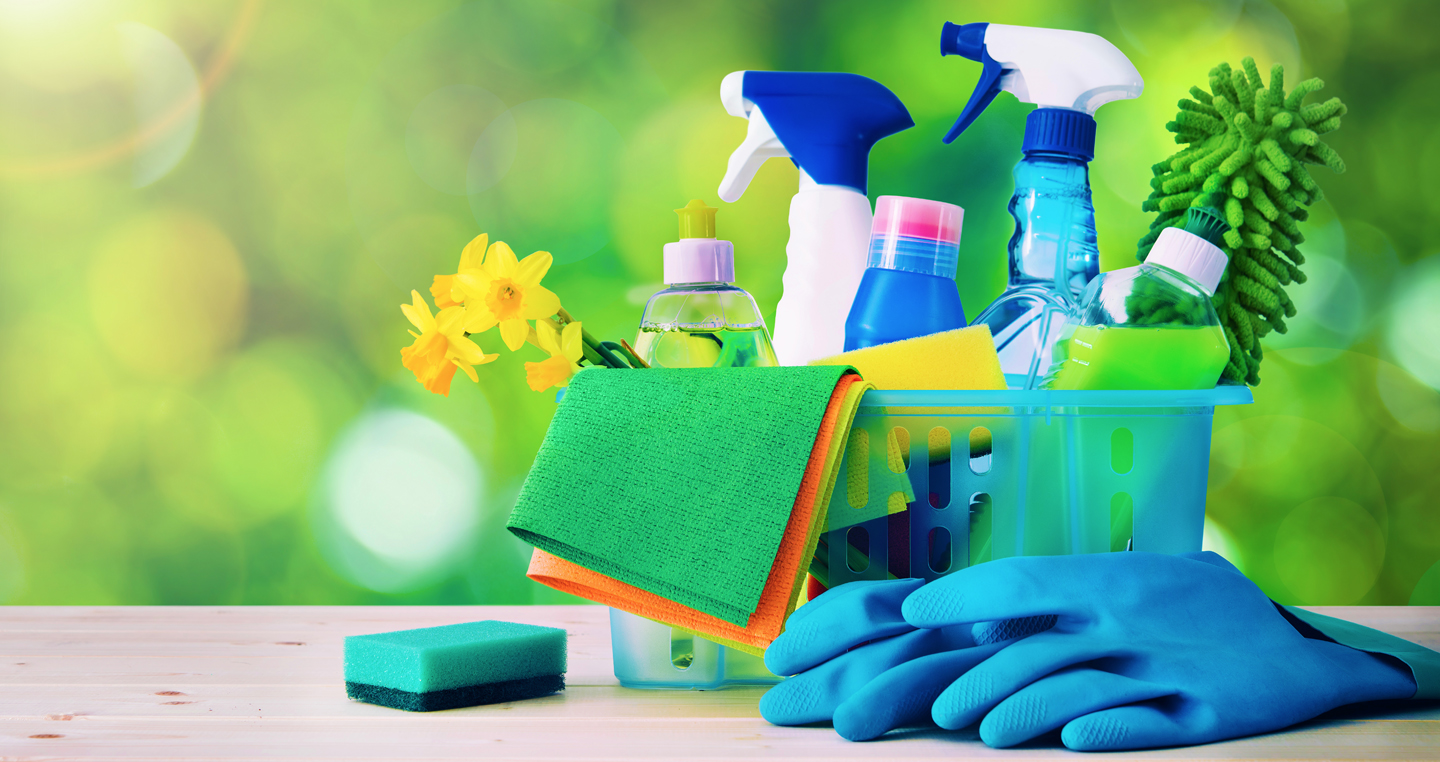How to Master Everyday Cleaning: Tips for Effective Defrosted and Cleaned Every Few Months and Decluttering
How to Master Everyday Cleaning: Tips for Effective Defrosted and Cleaned Every Few Months and Decluttering
Blog Article
Recognizing the Need for Thoroughly Sanitizing and Sterilizing Regularly Touched Surfaces in High-Traffic Locations
In the world of public health and safety and security, the careful sanitation and sanitization of frequently touched surface areas in high-traffic locations stand as extremely important measures in preventing the spread of dangerous microorganisms. By exploring the various facets of surface disinfection, from the risks associated with overlooking cleansing methods to the efficient techniques that can be employed, a more clear understanding arises of the crucial duty these methods play in protecting public wellness.
Value of Surface Area Disinfection
Highlighting the comprehensive sanitation of high-traffic surfaces is important in keeping a hygienic atmosphere and avoiding the spread of harmful microorganisms. High-touch surface areas such as door manages, light buttons, elevator buttons, and kitchen counters serve as breeding grounds for viruses and bacteria. Regular disinfection of these surface areas is imperative to lower the risk of contamination and transmission of illnesses.
By carrying out a durable sanitation protocol, institutions and companies can produce a much safer atmosphere for staff members, customers, and visitors. Proper surface area sanitation not only alleviates the spread of contagious diseases yet additionally instills self-confidence in the tidiness and security of the facilities. This proactive strategy shows a commitment to wellness and wellness, which is specifically essential in high-traffic areas where the possibility of direct exposure to microorganisms is increased.
Furthermore, surface area disinfection plays a critical duty in overall infection control strategies. Integrated with hand hygiene practices, using masks, and maintaining physical distancing, thorough disinfection of high-touch surfaces forms a comprehensive defense against the transmission of dangerous microorganisms. Prioritizing surface area sanitation is a necessary element of an alternative strategy to health and wellness in common areas.
Dangers of Disregarding Cleansing Practices
Disregarding complete disinfection of high-traffic surface areas substantially enhances the danger of viral and microbial contamination, posing a severe threat to the health and safety and security of people often visiting these rooms. Failure to execute proper cleansing practices can lead to the build-up and spread of harmful microorganisms, consisting of infections and bacteria, on frequently touched surfaces such as doorknobs, hand rails, lift switches, and countertops.

In addition, neglecting the significance of thorough cleaning not only endangers the health of people yet also threatens initiatives to preserve a sanitary and tidy environment. It is essential to identify the relevance of correct sanitation protocols in protecting against the spread of infections and protecting public health and wellness.
Effective Disinfection Techniques
To preserve ideal sanitation and minimize the danger of contamination on high-traffic surfaces, utilizing effective sanitation methods is crucial. One of one of the most typical and efficient sanitation approaches is using chemical anti-bacterials. These items can vary in toughness and make-up, with some targeting details pathogens like viruses or bacteria. It is crucial to follow the supplier's guidelines for proper dilution, call time, and ventilation when using chemical disinfectants to guarantee their efficiency - Clear Out Any Clutter.
An additional effective approach is using UV-C light. UV-C light has been click reference revealed to be efficient in eliminating a broad variety of microbes by interrupting their DNA framework, therefore preventing them from replicating. Nevertheless, it is vital to utilize UV-C light properly, making sure that the correct strength and direct exposure time are related to achieve the preferred disinfection outcomes.
Additionally, employing steam cleansing as a sanitation method can be extremely efficient, especially on surface areas that are heat-resistant. Vapor can penetrate porous surface areas and eliminate microorganisms, viruses, and various other pathogens effectively. When using heavy steam cleaning, it is essential to make certain that the surface area reaches the required temperature for an adequate amount of time to guarantee correct sanitation.
Influence On Public Health
The maintenance of high requirements of tidiness and sanitation on high-traffic surface areas plays a crucial role in protecting public health and wellness. Often touched surface areas in locations with high step, such as doorknobs, hand rails, elevator buttons, and bathroom facilities, serve as breeding grounds for damaging microorganisms.
Efficient cleanliness methods not just secure people from dropping sick however additionally add to the total health of society. Public health and wellness authorities stress the relevance of preserving clean atmospheres to avoid episodes and contain the spread of ailments. In high-traffic locations like airport terminals, colleges, health centers, and public transport systems, the influence of extensive disinfection measures can not be underrated. Focusing on the sanitization of often touched surfaces is an aggressive technique to promoting public health and boosting the security of individuals in common areas.
Carrying Out Regular Cleaning Up Protocols
Immediately instituting and you could look here adhering to a regular routine of cleansing procedures is extremely important for preserving the sanitation and safety of high-traffic surface areas. Regular cleaning methods are vital in preventing the accumulation of bacteria and pathogens on often touched surface areas, particularly in locations with high foot traffic. By executing a systematic method to cleansing, companies can efficiently minimize the risk of disease transmission and produce a much healthier environment for workers, clients, and the general public.
To establish an effective cleaning timetable, it is essential to determine high-traffic locations that need regular focus. These locations may include doorknobs, handrails, lift switches, toilet facilities, and shared equipment. Carrying out a regular cleansing routine that targets these surfaces multiple times a day can considerably minimize the spread of unsafe bacteria and viruses.
Moreover, utilizing suitable cleaning agents and anti-bacterials is vital to ensuring that surfaces are completely sterilized. Normal training of cleansing personnel on appropriate cleansing methods and the value of adherence to the cleaning routine is also important in maintaining a hygienic setting. By focusing on regular cleansing procedures, organizations can promote the wellness and health of people who communicate with these high-traffic surfaces.

Verdict
In conclusion, it is important to prioritize extensive disinfection and sanitization of often touched surfaces in high-traffic locations to stop the spread of damaging pathogens and keep public wellness. It is crucial to acknowledge the significance of keeping clean surface areas in high-traffic locations to ensure the health of the neighborhood.
In the realm of public health and wellness and safety, the thorough disinfection and sanitization of frequently touched surface areas in high-traffic locations stand as vital steps in preventing the spread of dangerous pathogens. By discovering the various elements of surface sanitation, from the risks connected with neglecting cleansing methods to the efficient approaches that can be employed, a more clear understanding arises of the important duty these methods play in guarding public health.Furthermore, employing heavy steam cleansing as a sanitation method can be highly efficient, specifically on surfaces that are heat-resistant. When making use of heavy steam cleansing, it is crucial to ensure that the surface gets to the called for temperature level for an click to find out more enough amount of time to ensure correct sanitation.
In conclusion, it is vital to focus on comprehensive sanitation and sanitization of regularly touched surface areas in high-traffic areas to avoid the spread of damaging virus and keep public health.
Report this page